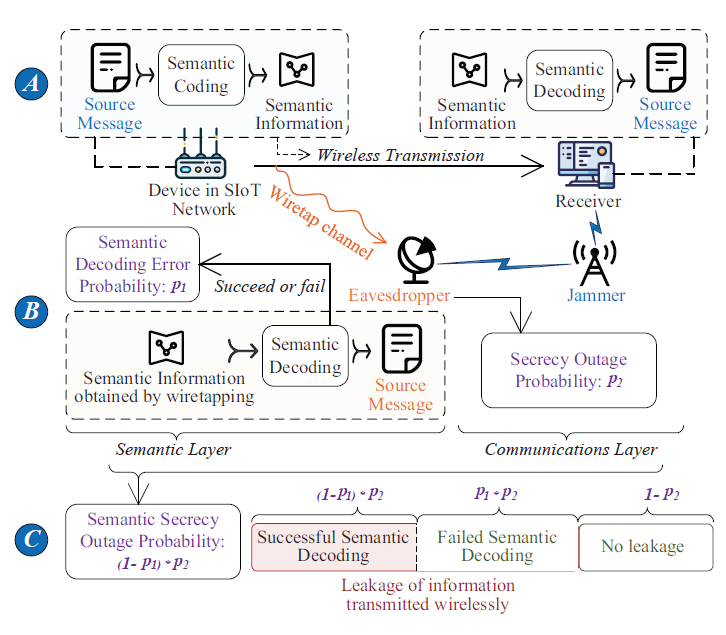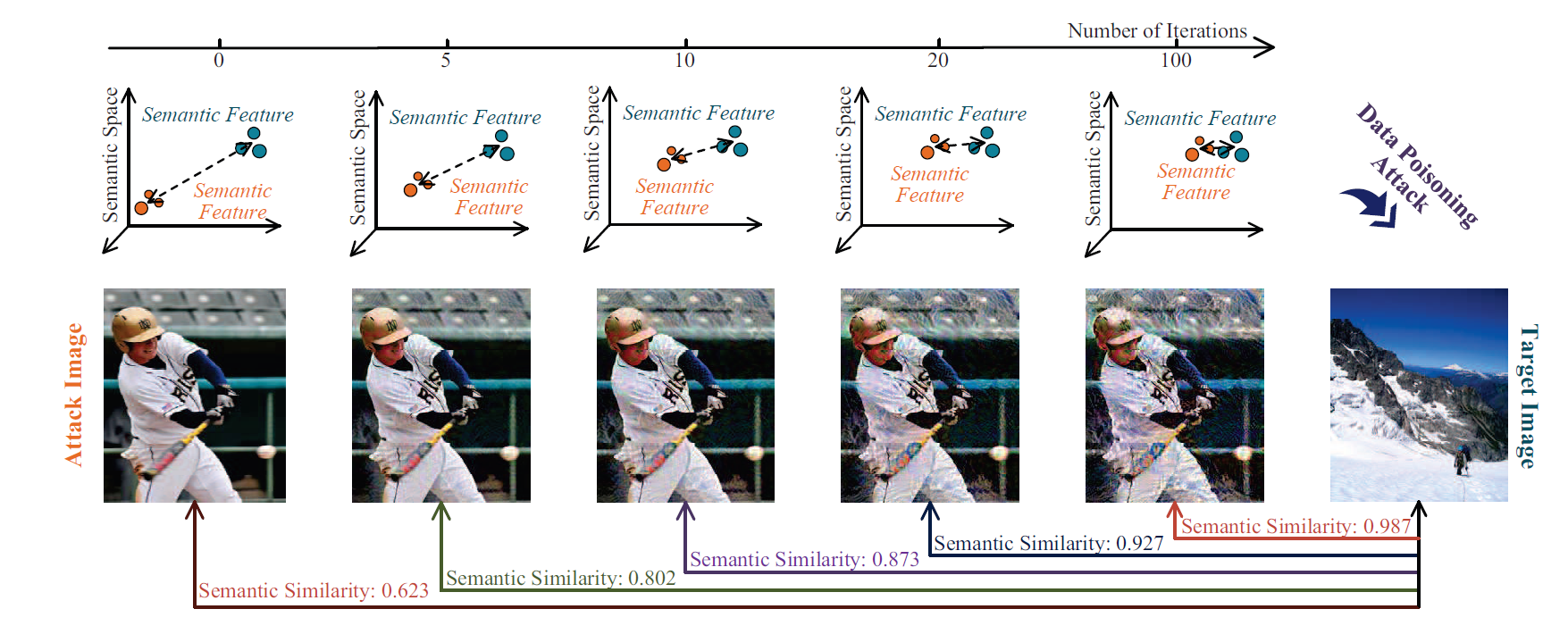Rethinking Wireless Communication Security in Semantic Internet of Things
Published in IEEE Wireless Communications, 2023
Recommended citation: Hongyang Du, Jiacheng Wang, Dusit Niyato, Jiawen Kang, Zehui Xiong, Mohsen Guizani, and Dong In Kim. "Rethinking Wireless Communication Security in Semantic Internet of Things." arXiv preprint arXiv:2210.04474 (2022). https://arxiv.org/pdf/2301.11289.pdf
Abstract: Semantic communication is an important participant in the next generation of wireless communications. Enabled by this novel paradigm, the conventional Internet-of-Things (IoT) is evolving toward the semantic IoT (SIoT) to achieve significant system performance improvements. However, traditional wireless communication security techniques for bit transmission cannot be applied directly to the SIoT that focuses on semantic information transmission. One key reason is the lack of new security performance indicators. Thus, we have to rethink the wireless communication security in the SIoT. As such, in the paper, we analyze and compare classical security techniques, i.e., physical layer security, covert communications, and encryption, from the perspective of semantic information security. We highlight the differences among these security techniques when applied to the SIoT. Novel performance indicators such as semantic secrecy outage probability (for physical layer security techniques) and detection failure probability (for covert communication techniques) are proposed. Considering that semantic communications can raise new security issues, we then review attack and defense methods at the semantic level. Finally, we present several promising directions for future secure SIoT research.
Index Terms: Semantic communications, internet-of-things, semantic noise, physical layer security, covert communications

Fig. 1: Comparison of physical layer security, covert communications, and encryption techniques, and our proposed new performance indicators for the SIoT.

Fig. 2: Rethinking physical layer security technique in the semantic Internet of Things. A novel security performance indicator, i.e., semantic secrecy outage probability, is proposed.

Fig. 4: Rethinking covert communications technique in the semantic Internet of Things. A novel security performance indicator, i.e., detection failure probability, is proposed.

Fig. 6: The targeted semantic attack approach. The experimental platform for running the attack algorithm is built on a generic Ubuntu 20.04 system with an AMD Ryzen Threadripper PRO 3975WX 32-Cores CPU and an NVIDIA RTX A5000 GPU.
